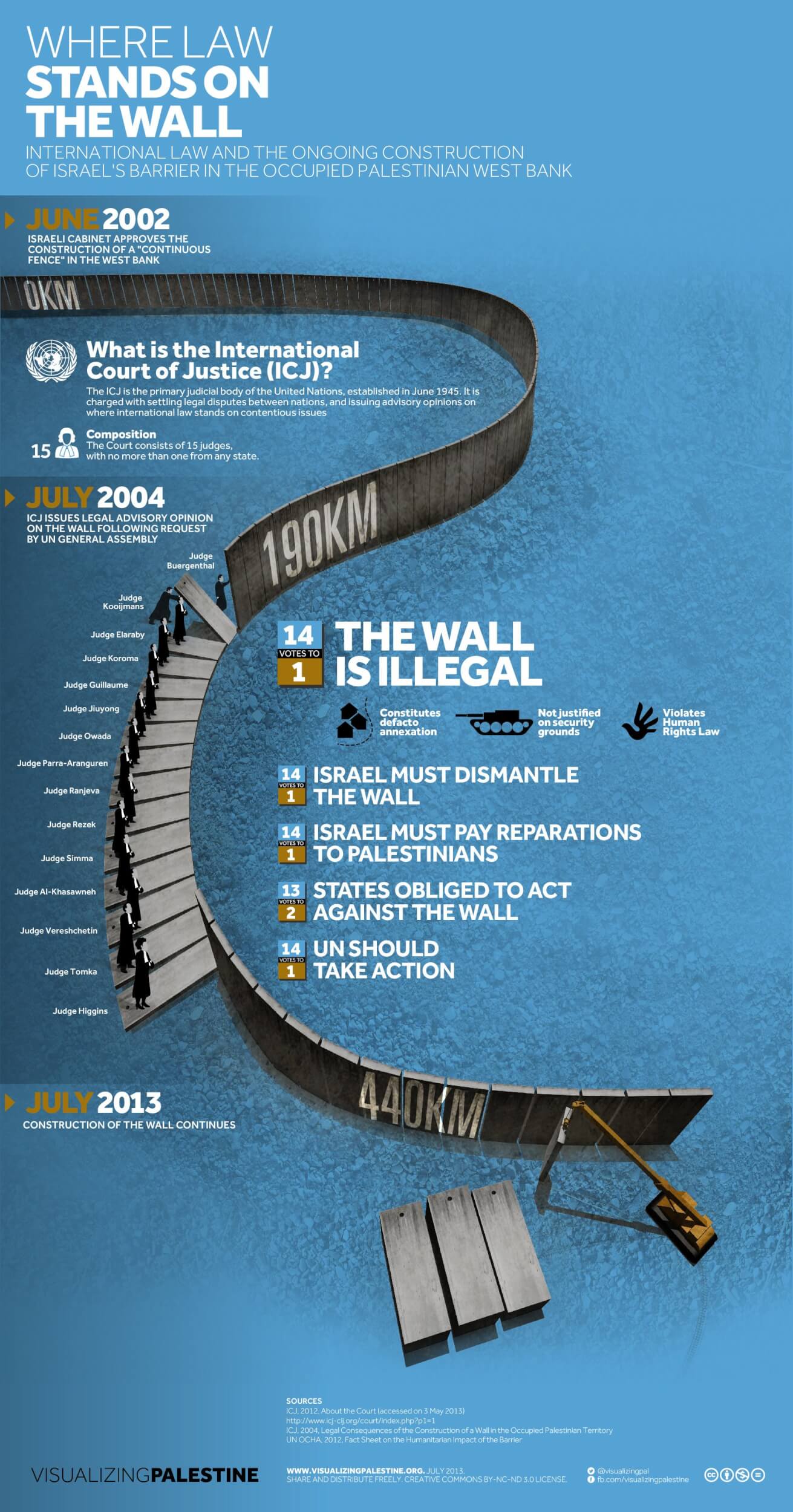In June 2002, the Israeli cabinet approved the construction of a “continuous fence” in the West Bank. In July 2004, the International Court of Justice (ICJ) declared this barrier illegal, choosing to refer to it as a “wall”.
The infographic “Where Law Stands on the Wall” describes the detail of ICJ’s decision. Today, 9 years on, and despite wide condemnation, little has been done by the international community to hold the Israeli government accountable for its ongoing disregard of international law.
You can view the full graphic here.
Visualizing Palestine wants to produce more interactive, farther reaching visuals in 2014 covering key injustices facing Palestinians today. To do so they’re crowdfunding until 8 November. The campaign has been backed by hundreds of people around the world, but its success relies on your support. Visit the campaign site here.
Anyone who gives $40+ can choose to have their name included in a supporters’ list for a graphic produced using funds from the crowdfunding campaign.



Can we hope that this graphic will follow the 4-piece maps of the shrinking Palestine on Boston’s, San Francisco’s, and other transit advertising. IMO its really neat and emphasizes international law viscerally.
It’s regrettable that the ICJ issued simply an advisory opinion on the legality of the wall and the recommendation that it be followed up by the UNGA and UNSC. Since it was only an opinion with nothing binding about it and in light of it going nowhere and anywhere in the UNSC because of the US automatic veto on Israel-related issues, Israel didn’t give it a second thought. One has to wonder why the UNGA requested the opinion in the first place. It’s been almost 10 years since the opinion was issued, but Israel continues on its merry way of thievery without a care about what the world thinks.
Walid, this is what Hostage said on 14/07/13 about this very issue :
I didn’t realize that Ramzi Jaber was one of the driving forces behind these infographics. They are fantastic.
http://www.irishtimes.com/news/world/middle-east/graphic-illustration-of-palestinian-concerns-1.1579952